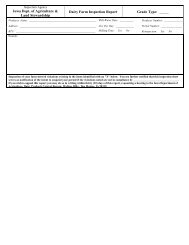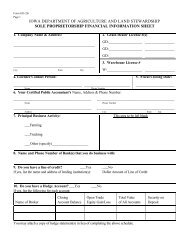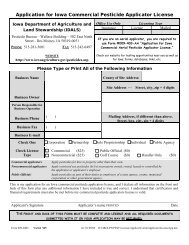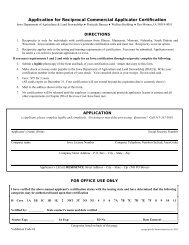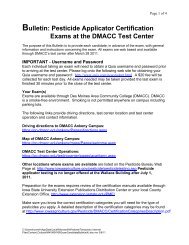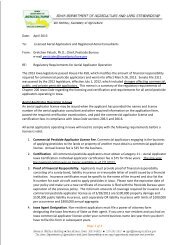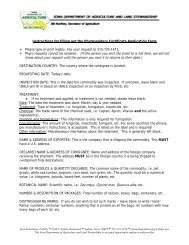Exhibit C: Detailed Background, Work Group Recommendations
Exhibit C: Detailed Background, Work Group Recommendations
Exhibit C: Detailed Background, Work Group Recommendations
You also want an ePaper? Increase the reach of your titles
YUMPU automatically turns print PDFs into web optimized ePapers that Google loves.
• The CREP program has been implemented on a very limited scale relative to the overall need. It<br />
has not yet provided a significant reduction in nitrate concentrations on major Mississippi River<br />
tributaries and will not do so unless the concept is implemented extensively throughout the tiledrained<br />
areas of the state. CREP sites will not provide significant flood damage reduction<br />
benefits unless flood water detention is planned and provided for in CREP structure placement<br />
and designs.<br />
• Several state water resource programs are providing useful if limited assistance to water<br />
resource projects. Generally these programs have been focused on the maintenance of soil<br />
productivity or improving water quality. With a few exceptions, these programs have generally<br />
not focused on the floodplain management or flood damage reduction. State water resource<br />
programs include:<br />
o Department of Natural Resources (DNR):<br />
• 319 Program (EPA program administered by DNR)<br />
• Lake Restoration Program<br />
• Clean Water Revolving Fund<br />
o Iowa Department of Agriculture and Land Stewardship (IDALS)<br />
• Iowa Financial Incentives Program (IFIP)<br />
• Watershed Protection Program (WSPF)<br />
• REAP Water Protection Fund (WPF)<br />
The IFIP and WSPF programs could be targeted to focus more on upland run‐off<br />
reduction. However, there would be associated opportunity costs in the form of other<br />
objectives that would receive less attention than they are currently.<br />
• The Farm and Ranch Land Protection Program (FRPP) works well in Iowa but is<br />
underutilized. So far, only ____ acres have been protected through FRPP easements. This<br />
program provides matching funds to help purchase development rights to keep productive farm<br />
and ranchland in agricultural uses. <strong>Work</strong>ing through existing programs, USDA partners with<br />
State, tribal or other local governments and non‐governmental organizations to acquire<br />
conservation easements or other interests in land from landowners. USDA provides up to 50<br />
percent of the fair market easement value of the conservation easement.<br />
• The Grassland Reserve Program (GRP) works well in Iowa but is also underutilized. To date<br />
there are only _____ acres of land in Iowa covered by thirty‐year GRP easements. This is a<br />
voluntary conservation program that emphasizes support for working grazing operations,<br />
enhancement of plant and animal biodiversity, and protection of grassland under threat of<br />
conversion to other uses. Participants voluntarily limit future development and cropping uses of<br />
the land while retaining the right to conduct common grazing practices and operations related<br />
to the production of forage and seeding, subject to certain restrictions during nesting seasons of<br />
bird species that are in significant decline or are protected under Federal or State law. A grazing<br />
management plan is required for participants.<br />
The GRP could be used as a tool both for upland run‐off reduction and for floodplain<br />
management.<br />
• The Federal PL 83‐566 Watershed Protection and Flood Prevention (PL‐566) Program<br />
has a long history of flood damage reduction success in watersheds and communities across the<br />
state. However, appropriations for this program have dwindled such that only a relative few<br />
63



![Ch 44, p.1 Agriculture and Land Stewardship[21] IAC 4/23/08 - Iowa ...](https://img.yumpu.com/49992480/1/171x260/ch-44-p1-agriculture-and-land-stewardship21-iac-4-23-08-iowa-.jpg?quality=85)

